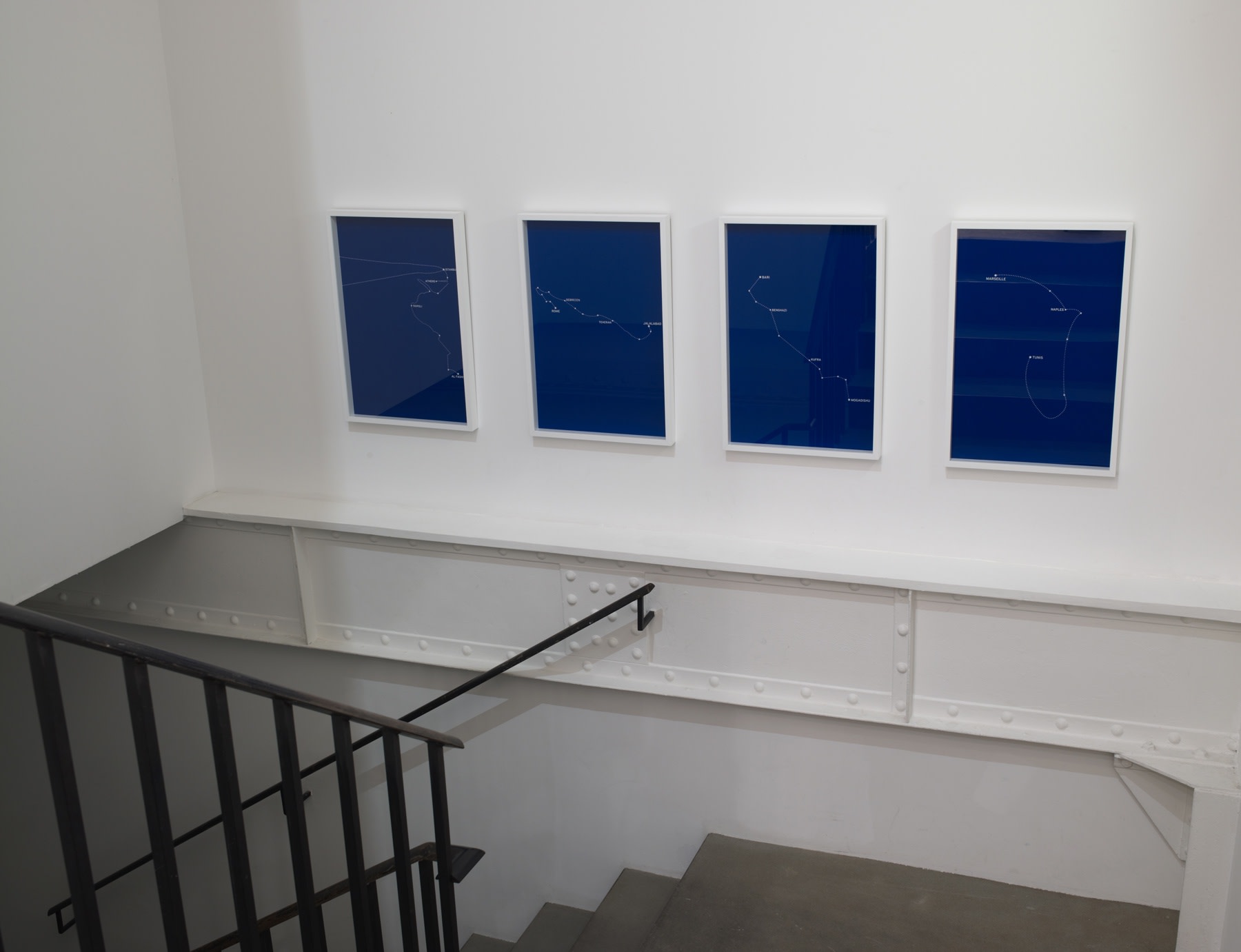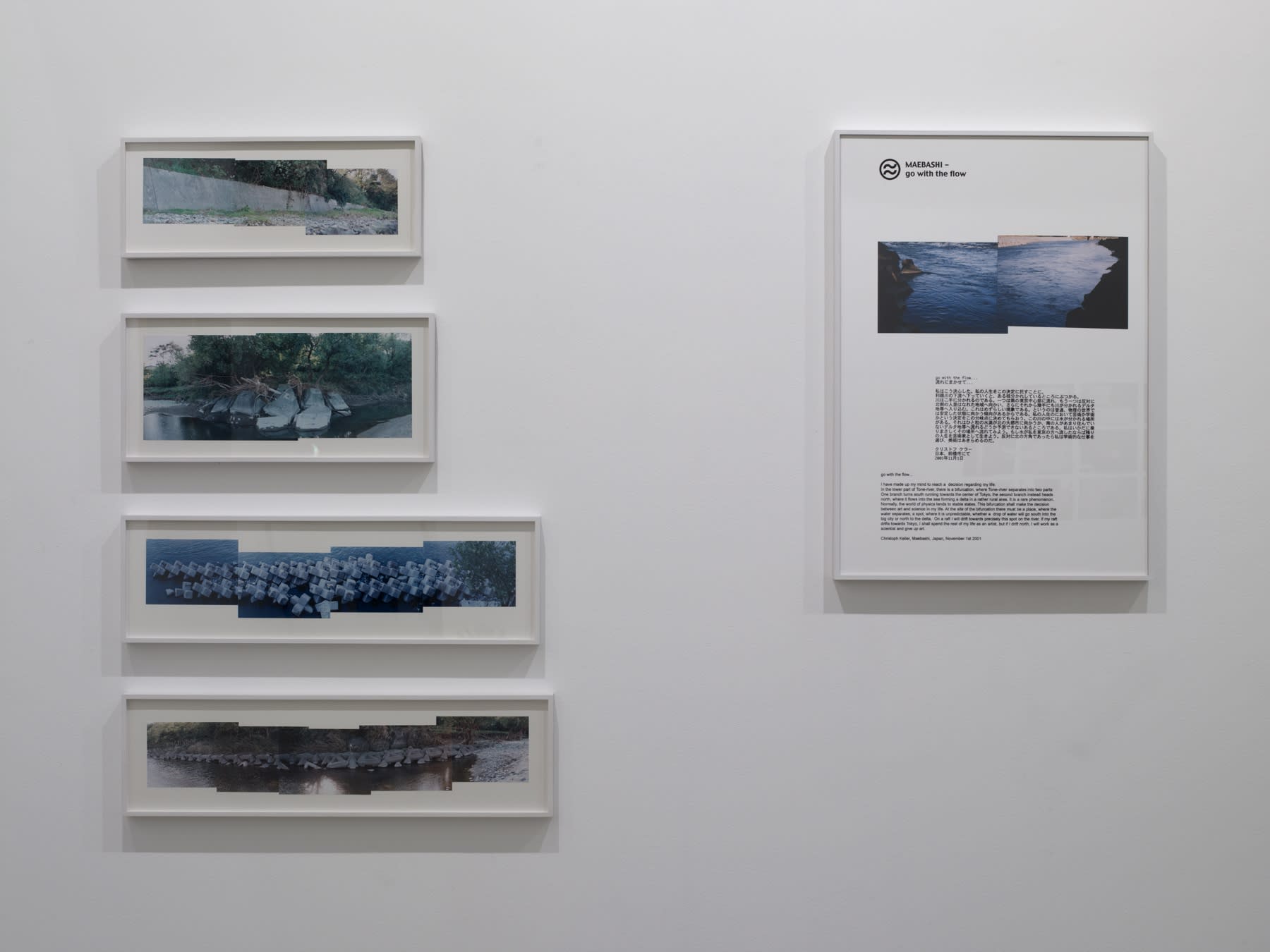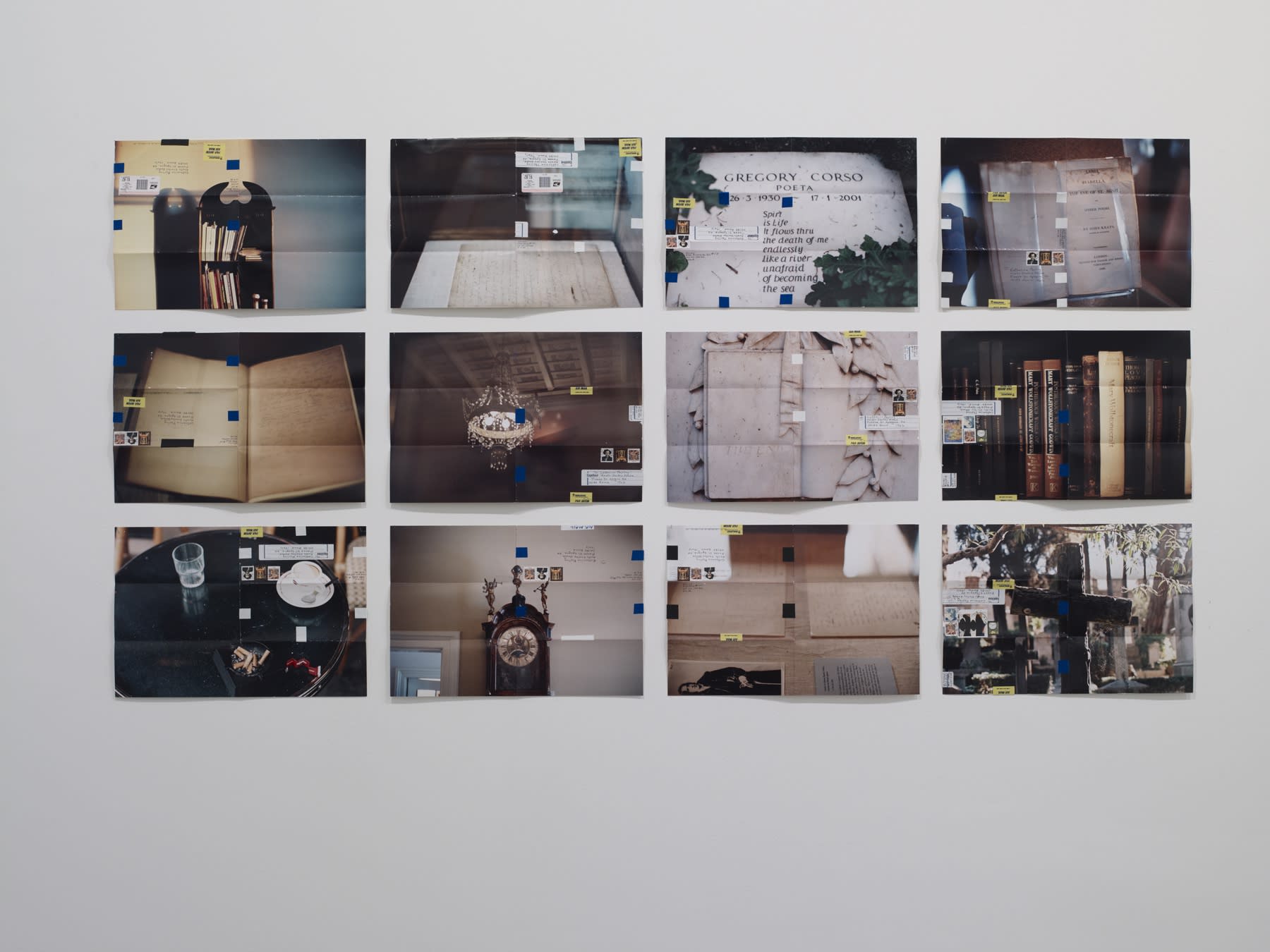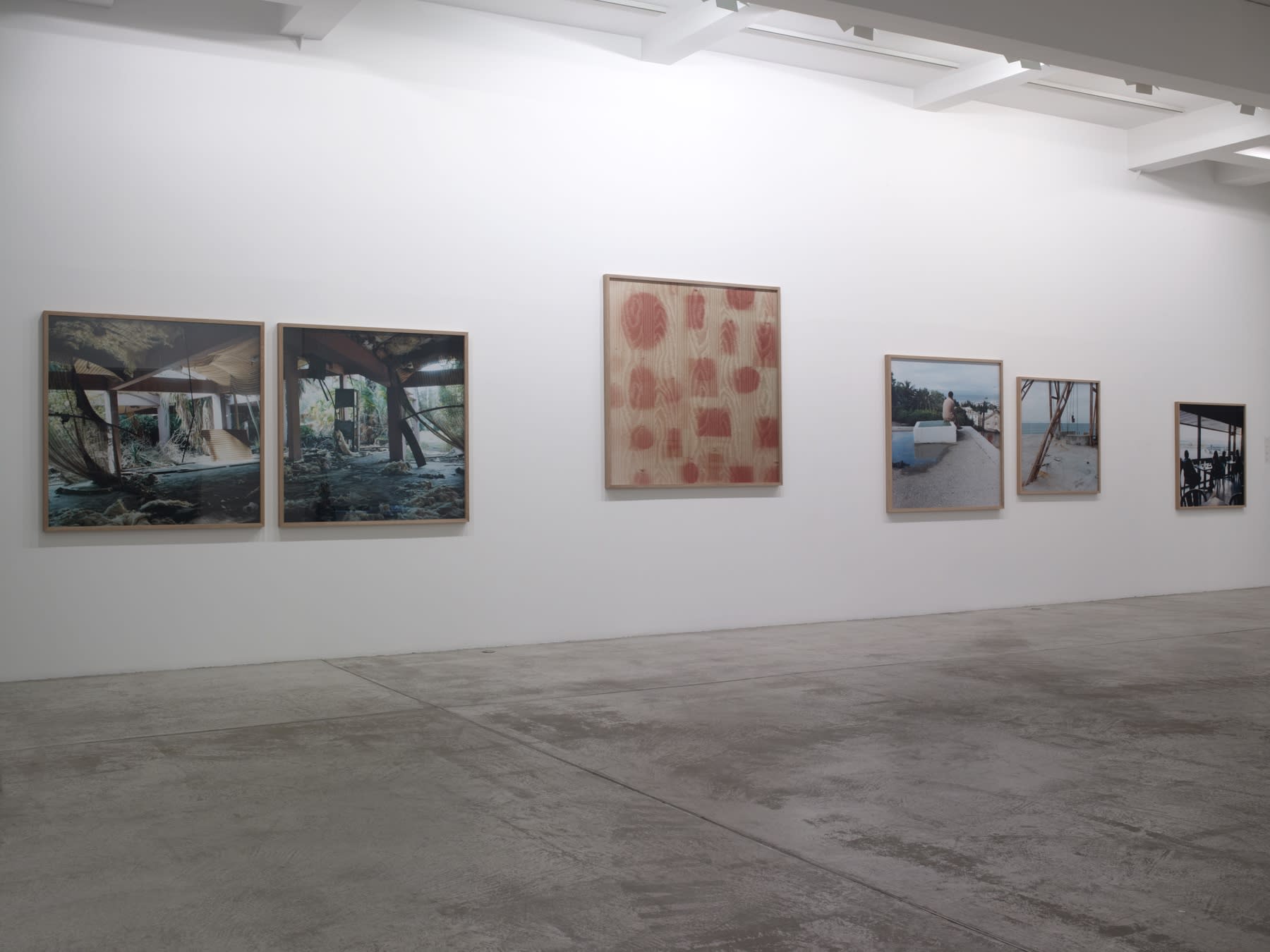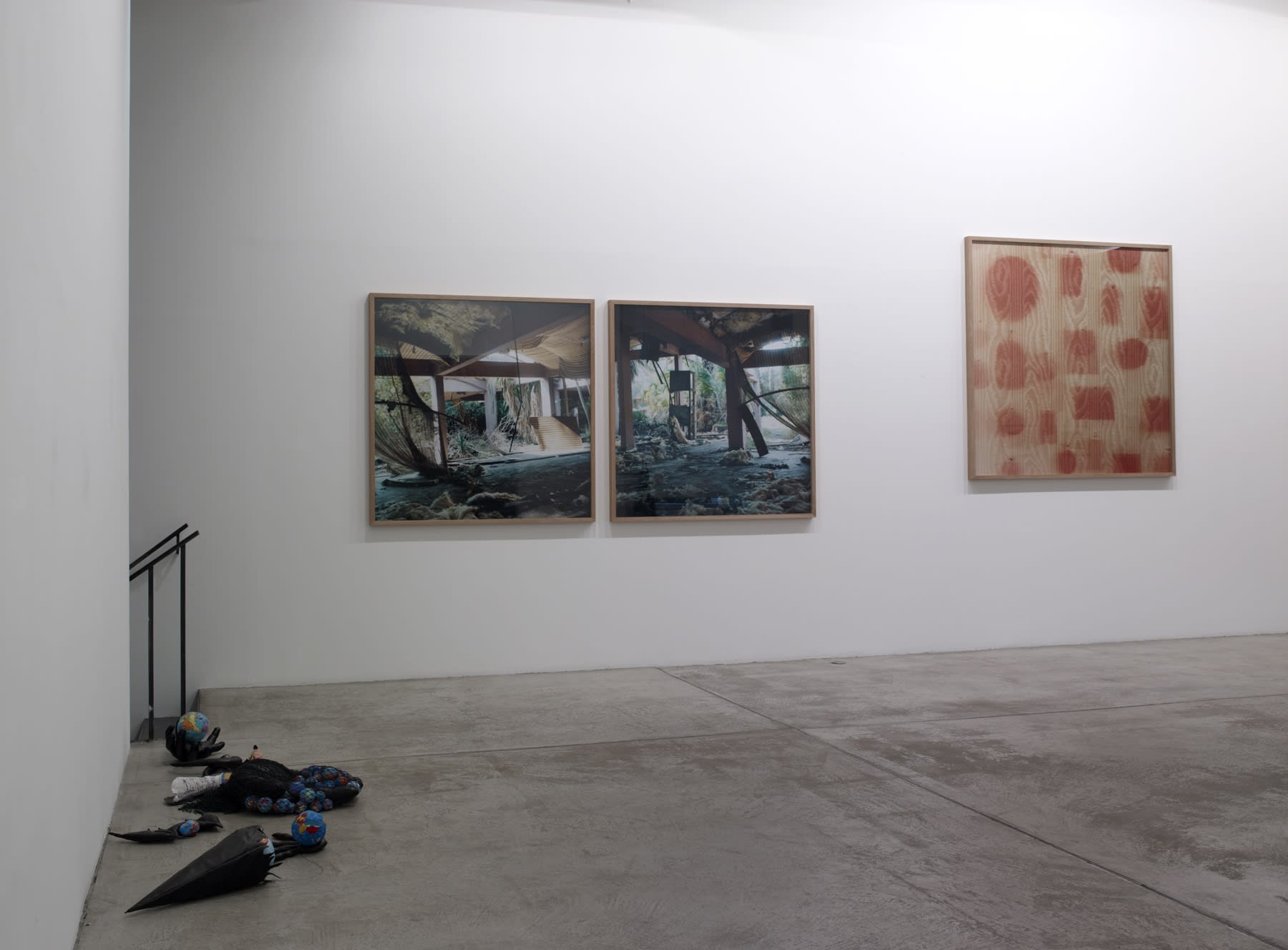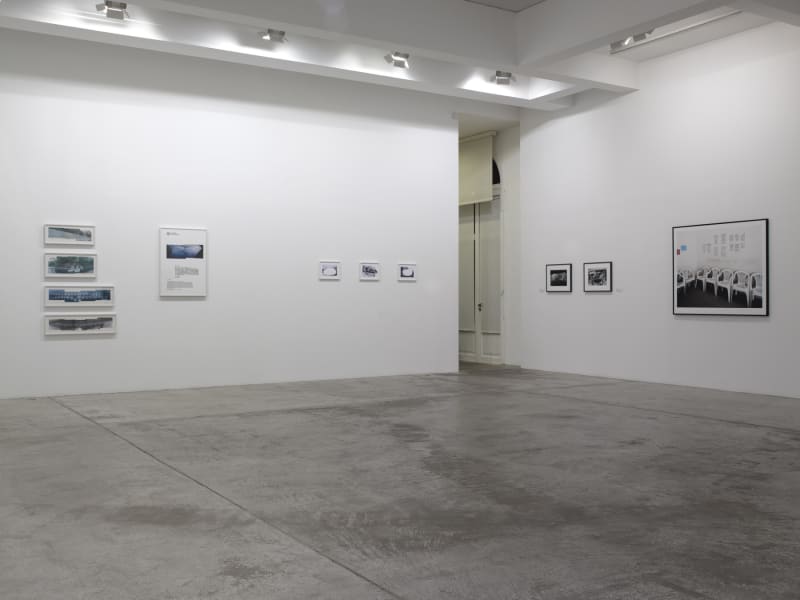Overview
This exhibition draws together a selection of works around the idea of departure. Some works are related to the passage from one place to another, from one time to another. Some of them refer to changes in life, to the end of a story or a belief. Each one shows, in its own way, the energy and the loss generated by mutations of trajectories, by choices, by separations. The title evokes a vision, fugitive or more analytical, of the distance covered or imagined, of separations, of metamorphosis.
Eleven artists, whose practices are distinct, coming from different generations and contexts, meet here around a temporary theme, in the form of departure or bifurcation. Cartographies, transitory surveys, fictive constellations, representations of waiting or separation; these images tell not just one story. They intend to be displaced by the imaginary. They do not resemble one another and do not complete each other. They are not trying to compose a formal or ideological cohesion. Their common presence opens territories, possibilities of derivation, inviting us to move along with them.
You Have Been There - départs, bifurcations
6 - 30 July 2011
This exhibition draws together a selection of works around the idea of departure. Some works are related to the passage from one place to another, from one time to another. Some of them refer to changes in life, to the end of a story or a belief. Each one shows, in its own way, the energy and the loss generated by mutations of trajectories, by choices, by separations. The title evokes a vision, fugitive or more analytical, of the distance covered or imagined, of separations, of metamorphosis.
Eleven artists, whose practices are distinct, coming from different generations and contexts, meet here around a temporary theme, in the form of departure or bifurcation. Cartographies, transitory surveys, fictive constellations, representations of waiting or separation; these images tell not just one story. They intend to be displaced by the imaginary. They do not resemble one another and do not complete each other. They are not trying to compose a formal or ideological cohesion. Their common presence opens territories, possibilities of derivation, inviting us to move along with them.
Departures
In the cosmogony entitled L’Ensemble des Mondes that Annette Messager displays here on a table, the elements seem to have temporarily run aground. The planets are earthly globes trapped in fragments of bodies, nets or objects, and these hybrid figures orbit in a mental universe in tune with deregulation and fable.
Moyra Davey uses the notion of accident in her practice of photography, particularly in her series of works entitled Mailers, images that she sent by mail to their exhibition place and that bear the signs of the voyage they made. The End is made of twelve Mailers and gives the departure a definitive and radical definition. The photographs refer to the poet John Keats, and to the places linked to his presence in Rome where he died in 1821 at the age of 25.
The film maker Amar Kanwar evokes in four brief acts and with a radical and economic narrative the story of a separation. Most of the images in A Love Story were made in a gigantic garbage dump bordering New Delhi. The sorting and transformation of the area is transfigured by light and the activity that occurs, which sends us back to the processes of memory – preservation and choice, rejection and separation, recycling the traces of what we live and the disappearance of what we waste.
Waiting, intersections and overlaps
Three photographs by David Goldblatt, While in Traffic or The Waiting room… transport us to the banality of everyday life: cars stopped in traffic, waiting rooms in a credit company. These are daily frames that shape together self-government and isolation.
Intersections by Jeff Wall depicts a saturated urban network where a few passers-by and the small visible manifestations of nature confront the built environment and the verbal invasion of commercial signs. The slow moving vehicles and the signs which indicate the locked environment do not evoke a sense of circulation and the possibility of a way forward. This picture, like other of Wall’s photographs, depicts co-existing worlds that cross each other without entering into any contact.
Gerard Byrne photographed trees in places where Samuel Beckett lived. Byrne staged the trees like theatre sets using the stage directions which open Waiting for Godot: A country road. A tree. Evening. Neither of the trees are the real starting point of the play but they evoke the coexistence of literature and life, of imaginary and common life.
Finally with Le Mur des Paresseux, Restaurant de la Villa Haris and Family Tree, Yto Barrada’s photographs associate signs of abandonment and waiting with those of desire, or with the metamorphosis of time: dreams of impossible departures, erasing images from the past, or hybrid states of modern ruins reclaimed by a strange vegetation.
Bifurcations, diversions
In the Mapping Journey series Bouchra Khalili filmed eight clandestine migrants who recount their trip to Europe and trace their journey on a wall map. For each film she distributed a lithograph where the journey is transformed into a celestial constellation, where stars become earthy places.
The main character for Prey by Steve McQueen is a magnetophone which broadcasts an enigmatic sound, both continuous and jerky. The object lying on the grass suddenly raises, attached to a balloon, tearing out from earthly gravity a tenuous and insistent tap dance.
Go with the flow is a fragment of a personal mythology; Christoph Keller tells how he put his trust in the North-South bifurcation of a Japanese river and the orientation of his research between science and art. In this emblematic fiction the decisions are made by “the flow” and “nature”. In Keller’s work the choice between different experimentation forms remains open, as a trace of this first bifurcation.
Pierre Huyghe produced for this show a collage in three parts. Huyghe has chosen as a starting point two places in Paris which are being transformed. With two found images he has cut out and displaced the fragments; he is mapping an impossible project. A replica to scale of lost, destroyed or rehabilitated spaces, a composite landscape in which it is possible to lose yourself.
Marie Muracciole is art critic and curator. She is working on the publication of Allan Sekula’s writings at the Fine arts school, Paris. She is co-curator of the exhibition Riffs, Yto Barrada, at the Guggenheim Berlin, which will tour in September at Wiels, Brussels. Forthcoming texts : Passons, Ich Sterbe, in a book on Marylène Negro (Analogues publications), and Du nouveau sur les fleurs, Family Tree, in Yto Barrada’s monography (JPRingier publications).
